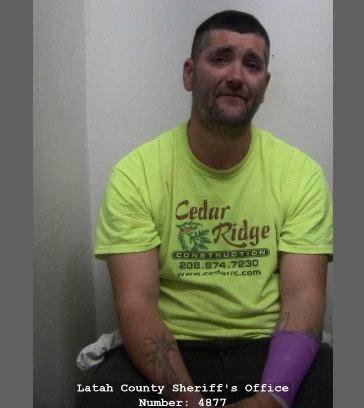Victims' families and the public are growing impatient with police investigating the University of Idaho stabbings. But analyzing evidence could take weeks.

www.nbcnews.com
Investigators untangling the Idaho student slayings face a ‘daunting task’: Parsing the DNA
The search for whoever fatally
stabbed four University of Idaho students last month includes examining an enormous amount of biological and digital evidence, a kaleidoscope of potential clues — some obvious, some unseen and some that may lead to wrong answers.
No suspect has been publicly identified, no weapon has been found, and police have said little about what they’ve learned, as the small college town of Moscow has become the focus of
widespread grief, anger and
speculation.
A break could come at any moment, from a confession or the thousands of tips submitted to police. But in the absence of a sudden development, investigators are relying on forensic techniques to tackle a case, in a time-consuming process that appears unusually complex, according to a half-dozen experts in crime-scene analysis and evidence gathering.
“This is a case that only the most experienced crime techs can solve and answer,” said Jennifer Coffindaffer, who worked 25 years as an FBI agent and investigated violent crimes. “It’s going to take a long, long time.”
Coffindaffer and the other experts told NBC News that the forensic investigation may be complicated by the chaotic nature of the murders, the layout of the rented house where the victims were found and the likelihood that many students hung out or partied there. Collecting and processing hundreds of DNA samples and then looking for a potential suspect’s genetic profile could take weeks or months, the experts said.
“I know it’s frustrating to people, but murder investigations are not a spectator event,” said Howard Ryan, a former commander of a crime scene unit in the New Jersey State Police who is now a consultant for law enforcement. “People are influenced by TV shows. They believe that these events and processing and work happens at a much more rapid pace and results are obtained much quicker than they really are.”
Although blood can be a crucial source of DNA, investigators don’t know from the start which is the victims’ and which could be from a suspect. The same thing goes for other potential clues left behind. So investigators have to collect a lot of specimens.
“You can’t assume each drop of blood is from the same person,” said David Carter, a professor of criminal justice at Michigan State University and former Kansas City, Missouri, police officer who specializes in homicide investigations and intelligence. “You have to sample them all and analyze them all to see if they belong to victims or a suspect. It’s very time intensive. They’re trying to find hairs, footprints from shoes, fingerprints — anything like that.”
Authorities in Idaho could be waiting on the outcomes of forensic analyses, which can take weeks or months to complete, he said.
“They’ve got to look at it all,” Carter said. “It’s laborious. Really laborious.”
MORE AT LINK









